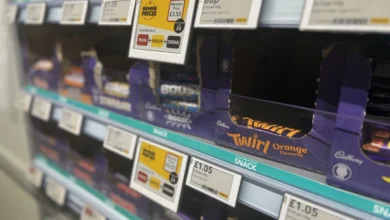Exploring Customisation Opportunities with 3D Printing
In today's rapidly evolving retail landscape, customisation has emerged as a powerful strategy to engage customers, foster loyalty, and drive sales. Among the innovative technologies that have revolutionised customisation, 3D printing stands out as a game-changer. This article delves into the exciting opportunities that 3D printing offers to retailers, highlighting its potential to enhance customer experiences and boost profitability.

The Rise of Customisation in Retail
Consumers today crave personalized products and experiences. Be it personalized apparel, custom-designed home decor, or bespoke jewellery, the desire for unique, tailored items has become a driving force in retail. This shift in consumer preferences has given rise to customisation as a key competitive advantage for retailers.
Why 3D Printing?
While customisation has been a concept for years, 3D printing has redefined the possibilities. Unlike traditional manufacturing methods that require costly molds, mass production, and large inventories, 3D printing enables retailers to create one-of-a-kind products on demand. Here’s why it’s a game-changer for customisation:
1. Endless Design Possibilities: With 3D printing, almost any design is possible. Retailers can offer customers the freedom to create unique products, from clothing and accessories to home goods and beyond.
2. Rapid Prototyping: Retailers can quickly prototype new product ideas without committing to expensive tooling or inventory. This agility can help retailers test market demand and refine their offerings.
3. Sustainability: 3D printing allows for resource-efficient production, reducing waste and energy consumption. This eco-friendly approach resonates with environmentally conscious consumers.
4. Localised Production: Retailers can establish localised 3D printing hubs, reducing shipping costs and delivery times. This approach aligns with the growing trend of supporting local businesses.
Opportunities for retailers in 3D Printing Customisation
1. Personalised Products: Offer customers the ability to personalise products online or in-store. From engraving names on jewellery to customising shoe designs, personalisation adds significant value.
2. Tailored Clothing: Partner with fashion designers or utilise AI-driven sizing tools to create clothing that fits customers perfectly. 3D-printed apparel can be tailored to individual measurements for a superior fit.
3. Custom Home Decor: Allow customers to design and customise home decor items like lampshades, vases, and furniture. These unique pieces can elevate interior spaces and resonate with consumers seeking a personal touch.
4. Custom Jewellery: Jewellery retailers can thrive by offering customised rings, necklaces, and bracelets. Customers can choose metals, gemstones, and designs to create pieces that hold sentimental value.
5. Prosthetics and Medical Devices: Explore opportunities in the healthcare sector by offering 3D-printed prosthetics, orthopedic implants, or other medical devices. This niche market can be both profitable and socially impactful.
6. Educational Workshops: Host workshops or online courses to educate customers about the potential of 3D printing. This not only builds brand loyalty but also fosters a community of engaged consumers.
Challenges for retailers in 3D Printing Customisation
While 3D printing offers significant opportunities for retailers, it also presents challenges:
1. Initial Investment: Acquiring 3D printers and the necessary software can be costly. Retailers must carefully evaluate their budgets and ROI expectations.
2. Design Expertise: Effective 3D printing requires design skills and knowledge of CAD software. Retailers may need to invest in training or hire experienced designers.
3. Quality Control: Ensuring consistent quality in 3D-printed products is crucial. Retailers must establish quality control processes to avoid customer dissatisfaction.
4. Regulatory Compliance: In industries like healthcare, complying with regulatory standards for 3D-printed products can be complex. Retailers should be prepared to navigate these challenges.
On the whole, in an era where personalisation is king, 3D printing has emerged as a catalyst for retail success. By embracing this technology and offering customised products, retailers can tap into new markets, foster brand loyalty, and stay ahead of the competition. While challenges exist, the potential rewards for those who embrace 3D printing customisation are boundless. As consumers continue to seek unique and tailored experiences, the time is ripe for retailers to seize the opportunities that 3D printing presents and embark on a journey of innovation and growth.











